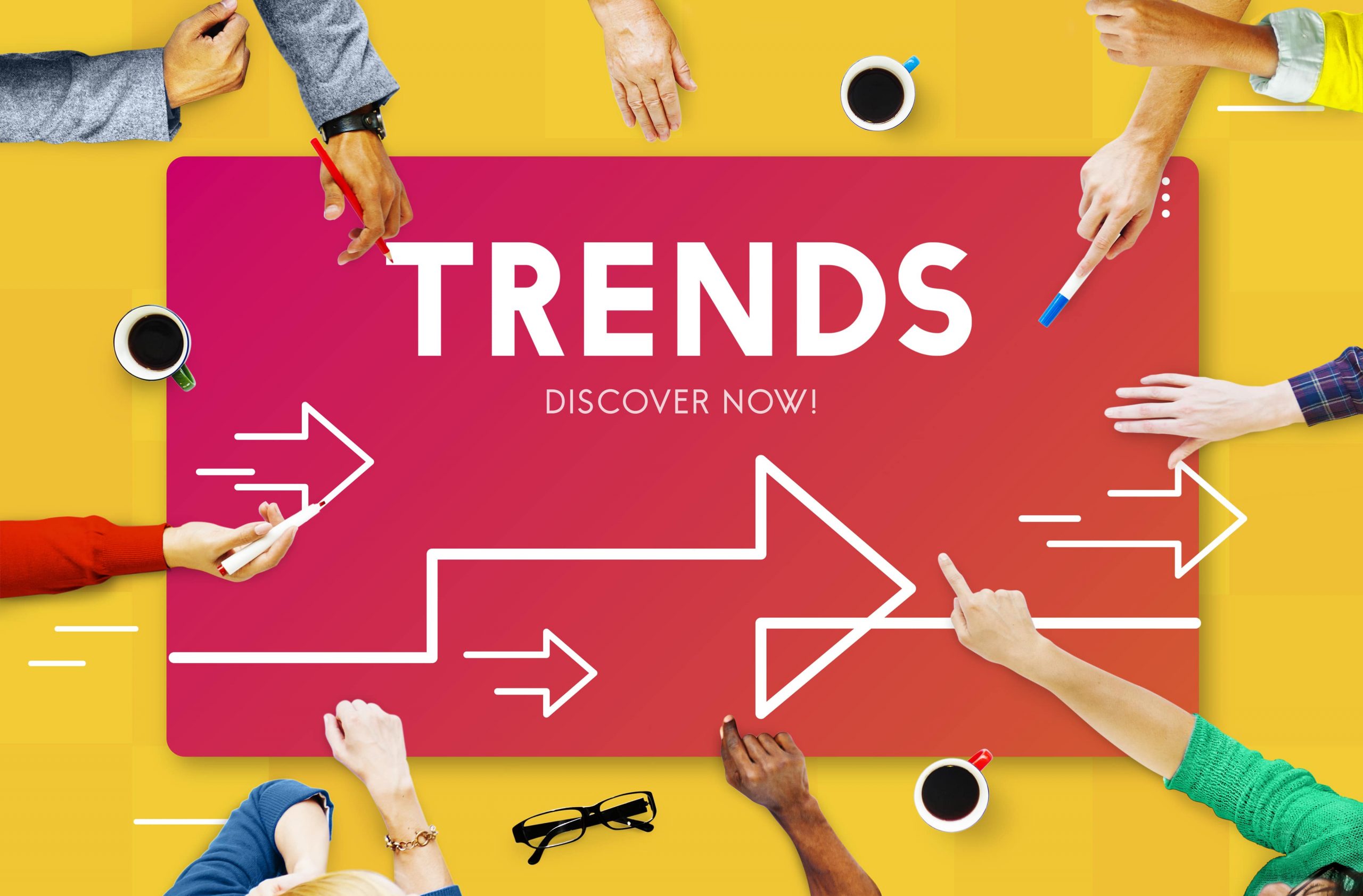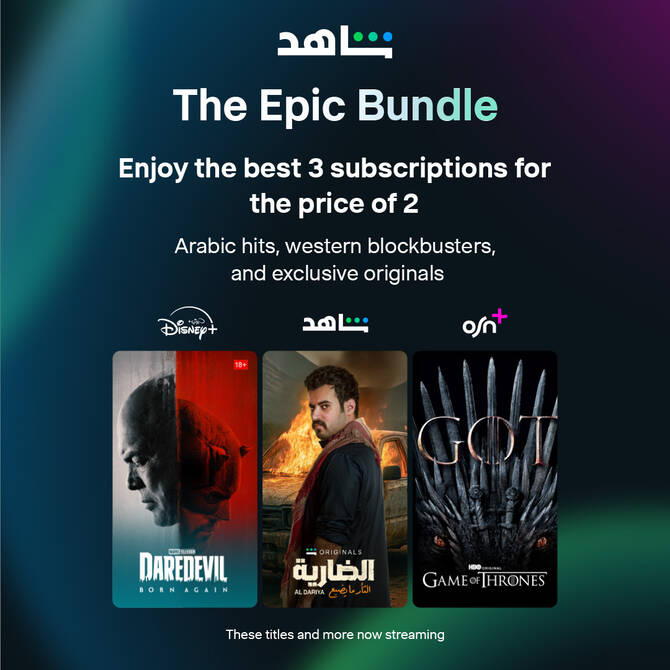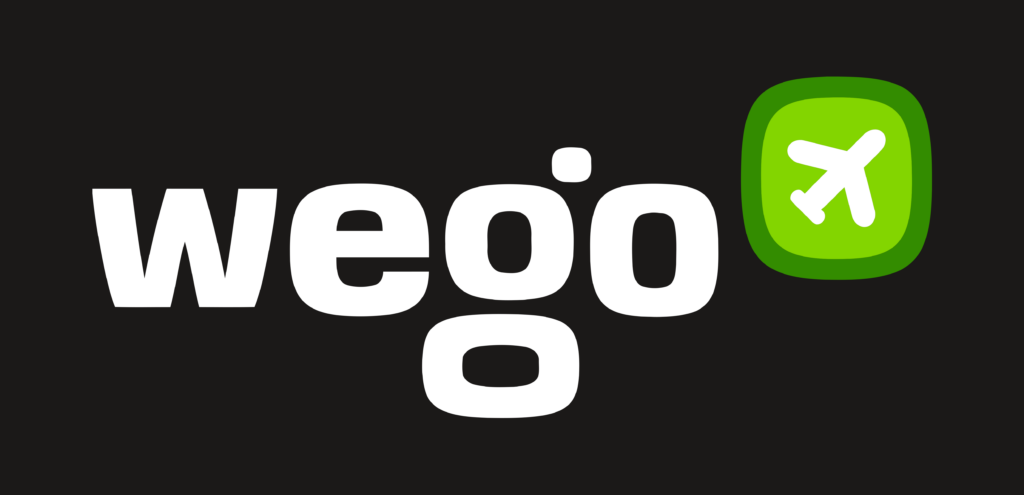Here are the key findings –
ADVERTISING
- Worldwide ad spend increased by 56.4% in Q3 compared to where it was at the end of Q2.
- The increase was seen most significantly in Northern America, where spend increased by 61.7% during Q3.
- Other regions with big increases included Central America (up 55.6%) and Western Europe (up 50.4%). Overall, spend levels have returned to where they were at the end of Q3 2019.
- Marketers should expect spend to continue to increase in the holiday season.
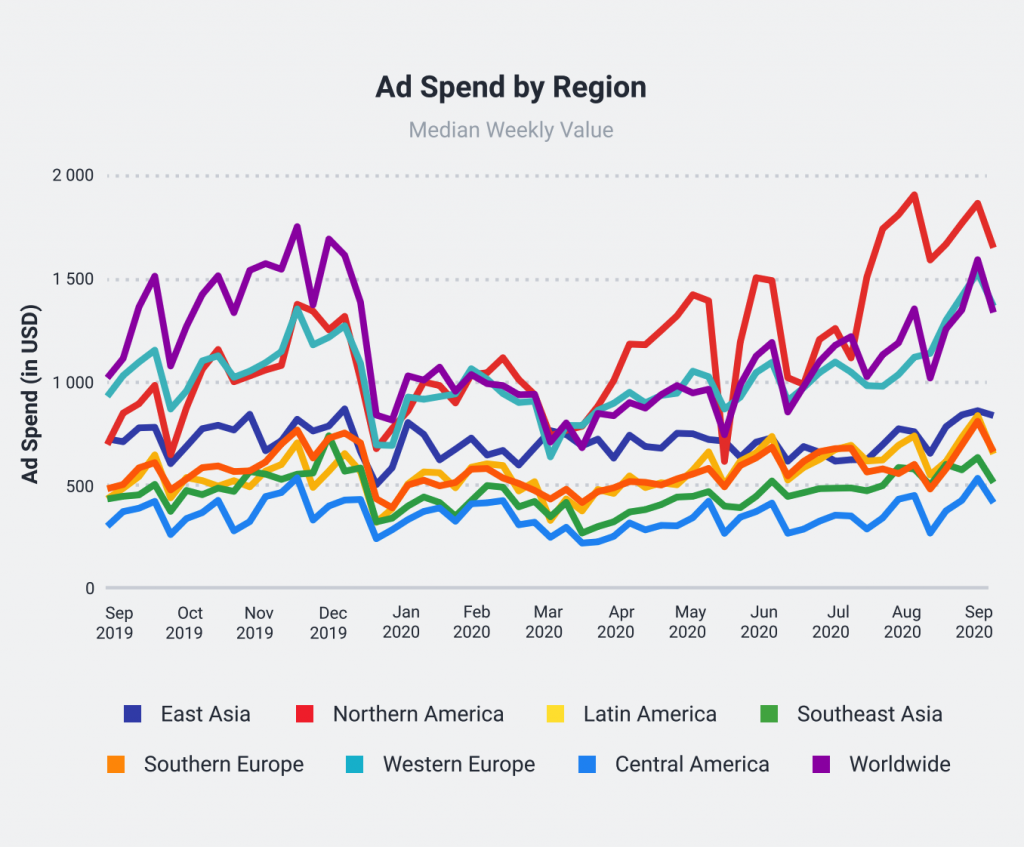
- The average industry ad spend increased by 38.9% in Q3 2020 compared to where it was at the end of Q2.
- That includes large jumps from FMCG Food (up 61.3%) and Auto (up 59.4%) as well as increases in Finance (up 35.3%) and E-commerce (27.5%).
- Ecommerce spending increased 56.5% compared to Q3 2019.
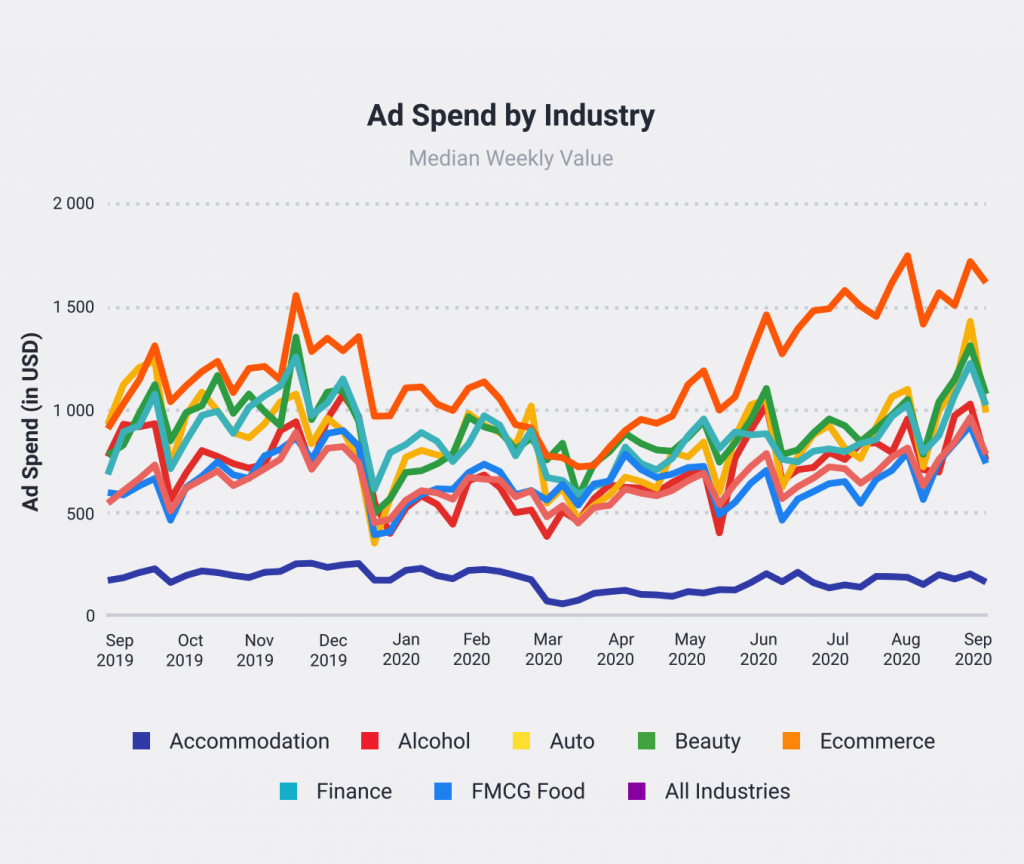
- Ad spend for all brands was 27.6% higher in Q3 2020 compared to Q3 2019.
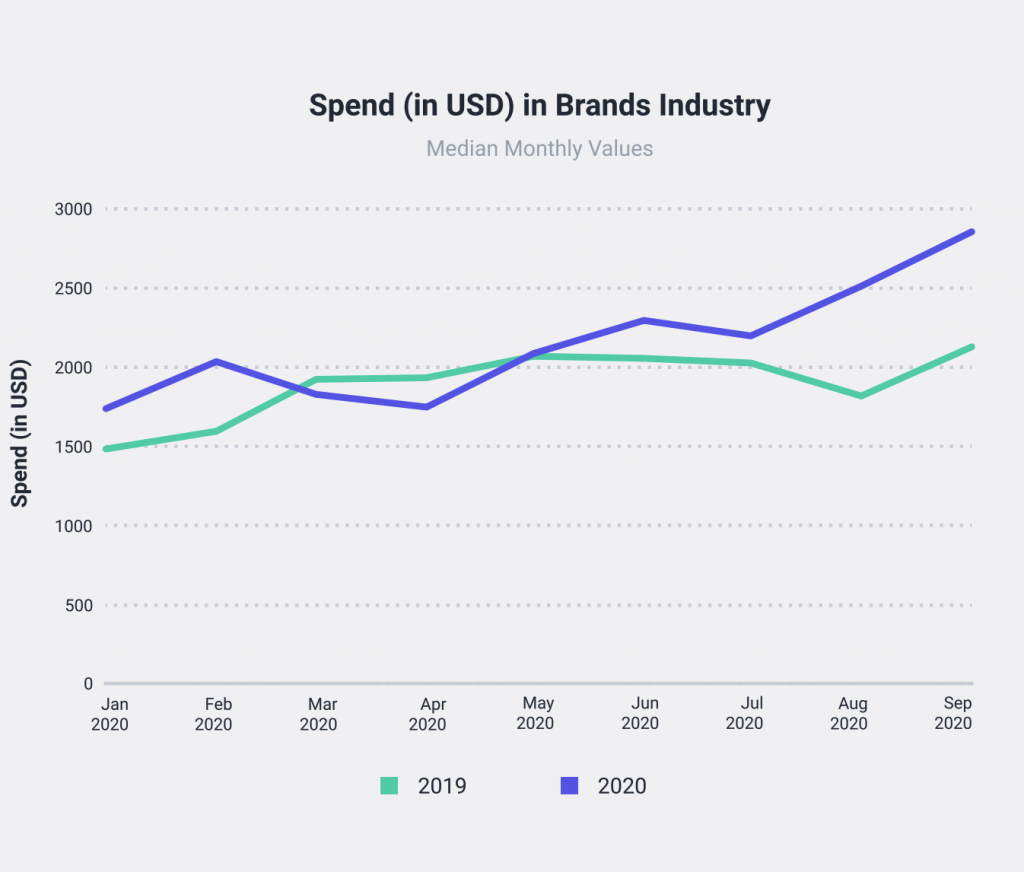
- The worldwide cost per click increased by 42.4% in Q3 2020 ($0.168 vs. $0.118) compared to where it was at the end of July, reaching its highest point since the end of 2019.
- Overall, the worldwide CPC was only 4.8% lower than it had been at the end of Q3 2019. This shows a continued return to pre-pandemic levels of spending that provide some confidence in marketers’ stability in the current landscape.
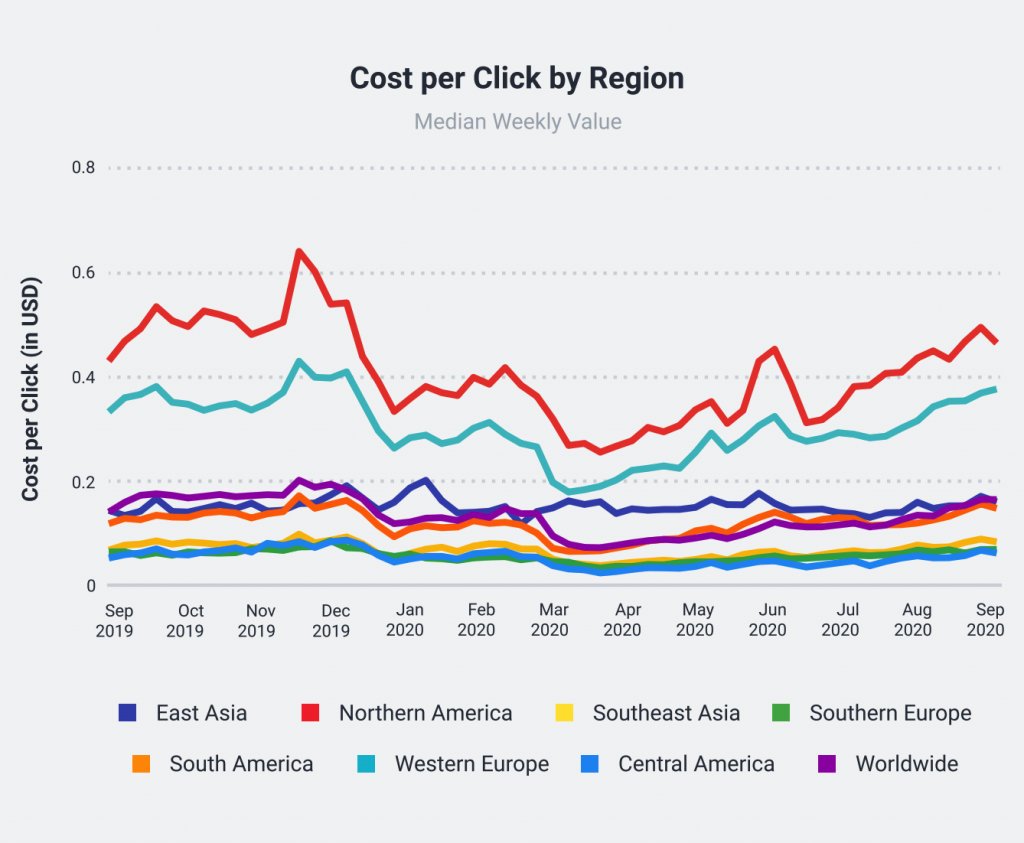
- In Q3 2020, ad spend on the Facebook news feed decreased by 2.3% while the spend on Instagram feed decreased by 1.2%.

- According to Socialbakers data, 75.9% of total ad spend went to the main feeds on Facebook and Instagram in Q3 2020.
- The only other somewhat significant placement was Instagram Stories, which got 10.4% of spend.
- In Q3 2020, Facebook ad reach increased by an average of 35% across all industries compared to Q3 2019.
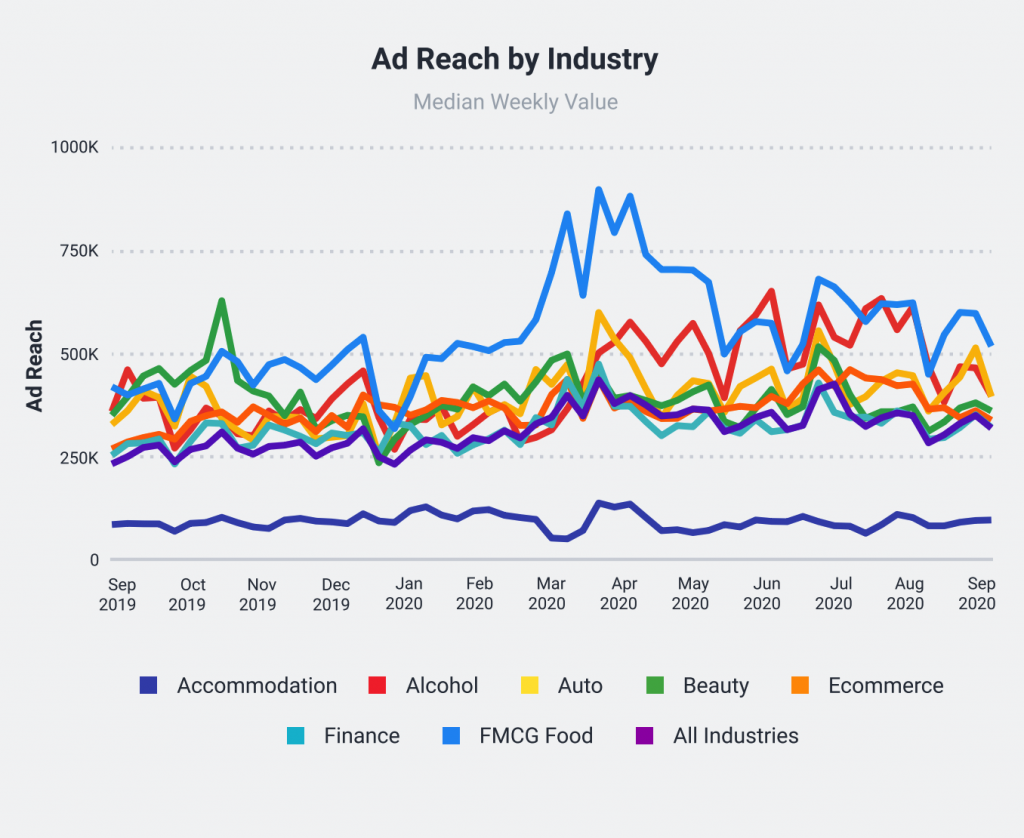
While higher costs are not generally a good thing for marketers, in 2020 the rise in global CPC is a welcome sign that things have stabilized and become a bit more predictable. While the spending in digital has returned to pre-pandemic levels, some user behaviors may have changed for the long run, and it’s extremely important for businesses to learn how to create the kind of digital experiences that users now expect.
ORGANIC ENGAGEMENT
- In Q3 2020, the total audience size of the 50 biggest brand profiles was 34.7% bigger on Instagram than Facebook.
- Engagement remained significantly stronger on Instagram, which had 22x more interactions than Facebook (in Q2 2020 it was 18.7x), while 61.9% of all brand posts were on Facebook.
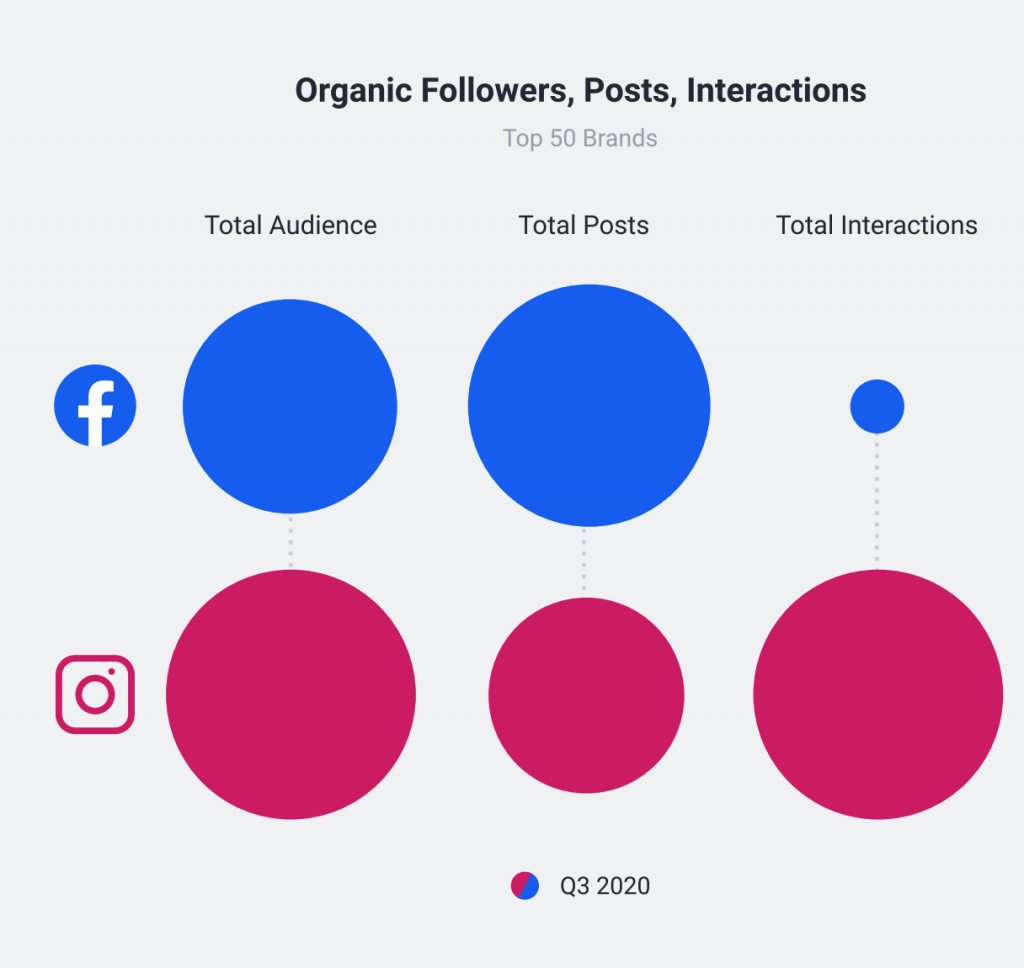
- Looking at worldwide brand profiles, Ecommerce received the highest percentage of interactions on Facebook and the second-highest number of interactions on Instagram, behind only Fashion.
- Ecommerce grew by 7.6% on Facebook and 1.8% on Instagram.
- The only industry that decreased slightly was FMCG Food on Facebook, which decreased by 22.9%.
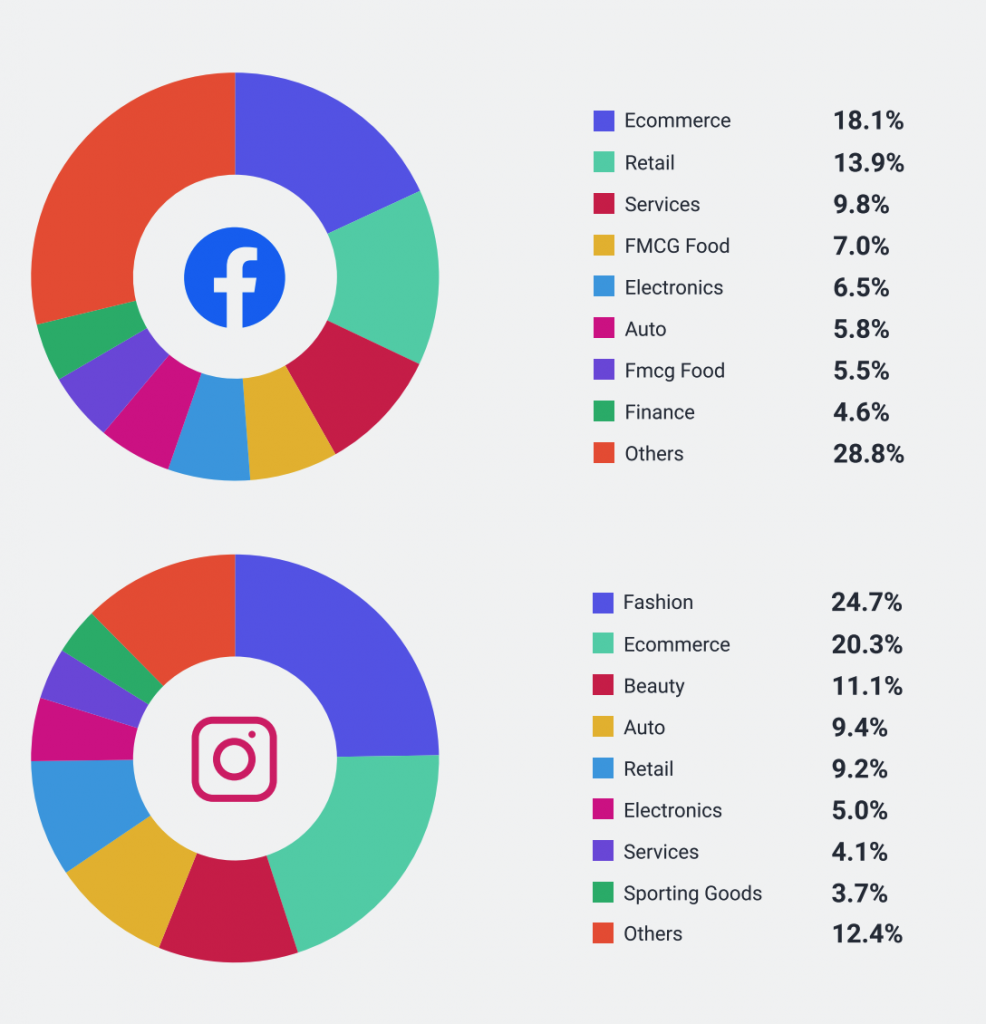
- Images made up around 70% of all content on both platforms.
- On Facebook, video was the second most common post type (17.0%), followed by links and status updates.
- The biggest change on either platform was a 6.9% increase in carousel usage on Instagram.
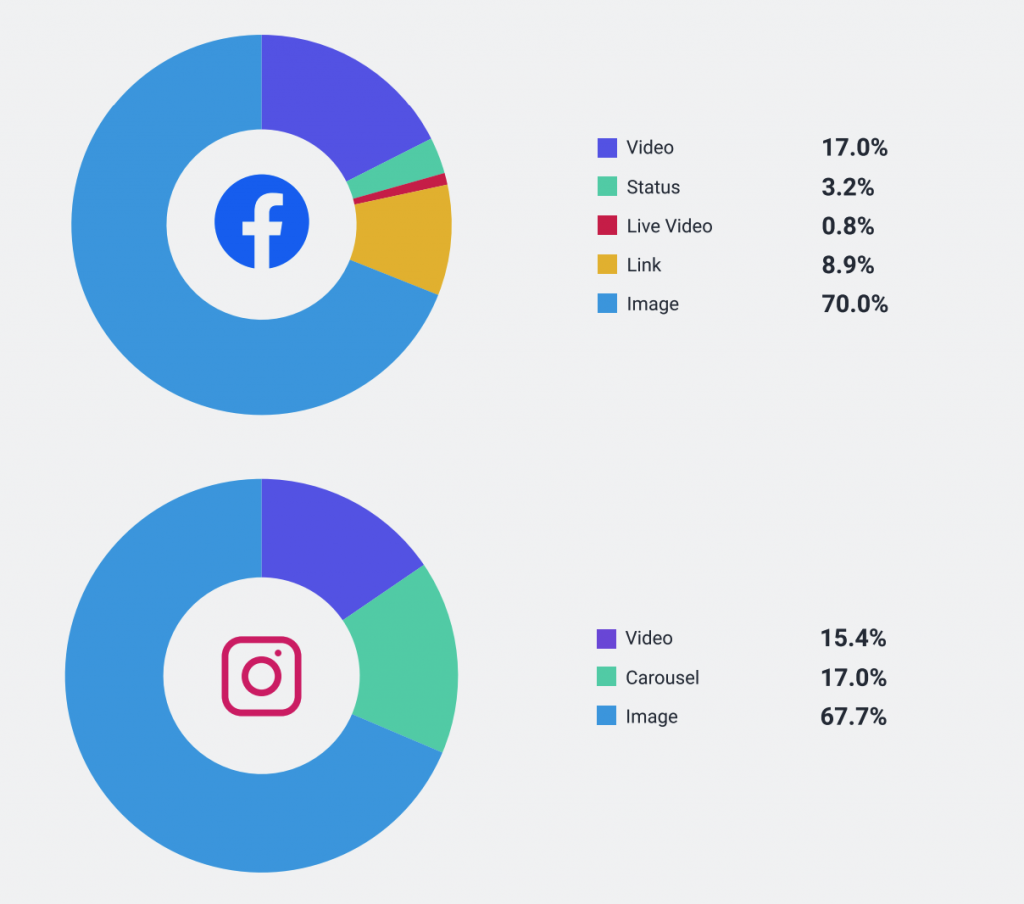
- In Q3 2020, Facebook Live was by far the most engaging format on the platform with 33 median post interactions.
- On Instagram, carousel was the most engaging format with 188 median post interactions. Carousel posts, which can contain both images and videos, have consistently outperformed image and video.
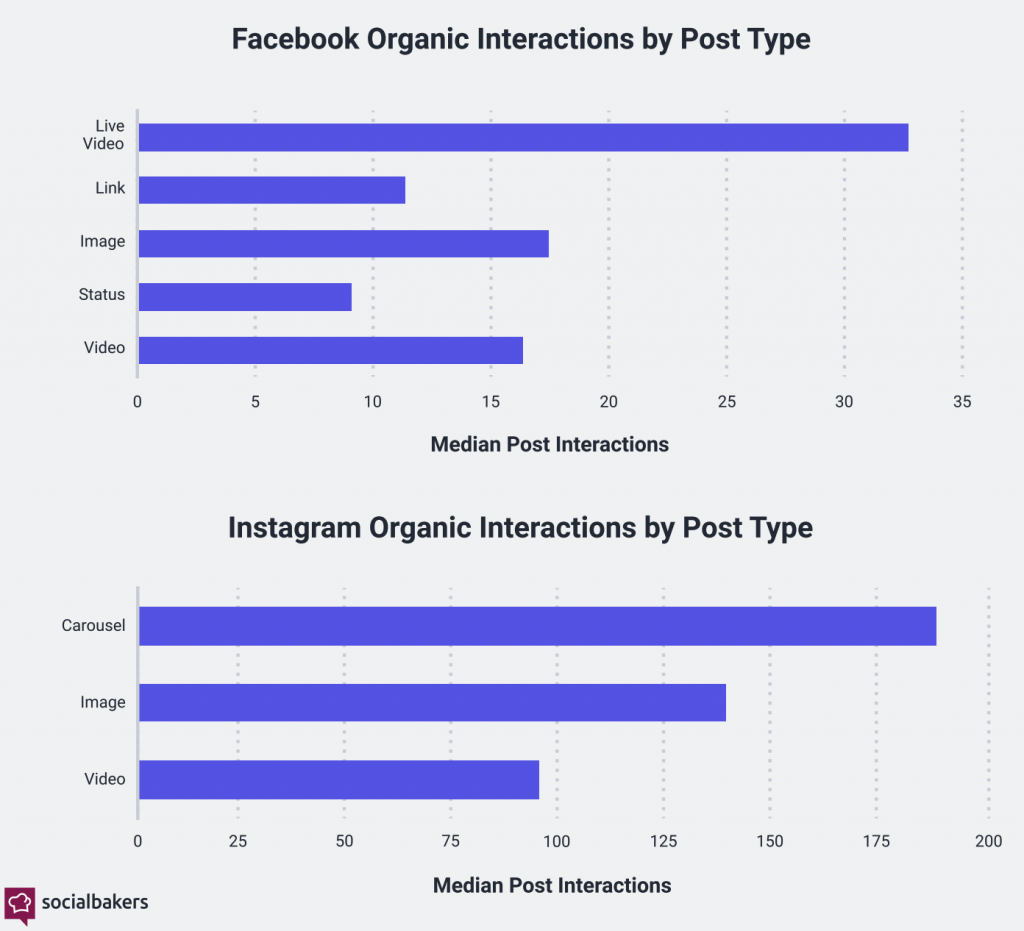
- The percentage of videos on both Facebook and Instagram increased slightly in Q3 2020 compared to Q3 2019.
- On Instagram, video content accounted for 23.2% of all posts in Q3 2020, an increase of 5.2% compared to Q3 2019.
- On Facebook, there was a higher overall percentage of video content in Q3 2020 (28.8%), but a smaller increase as that was 2.6% higher than the same time period last year.
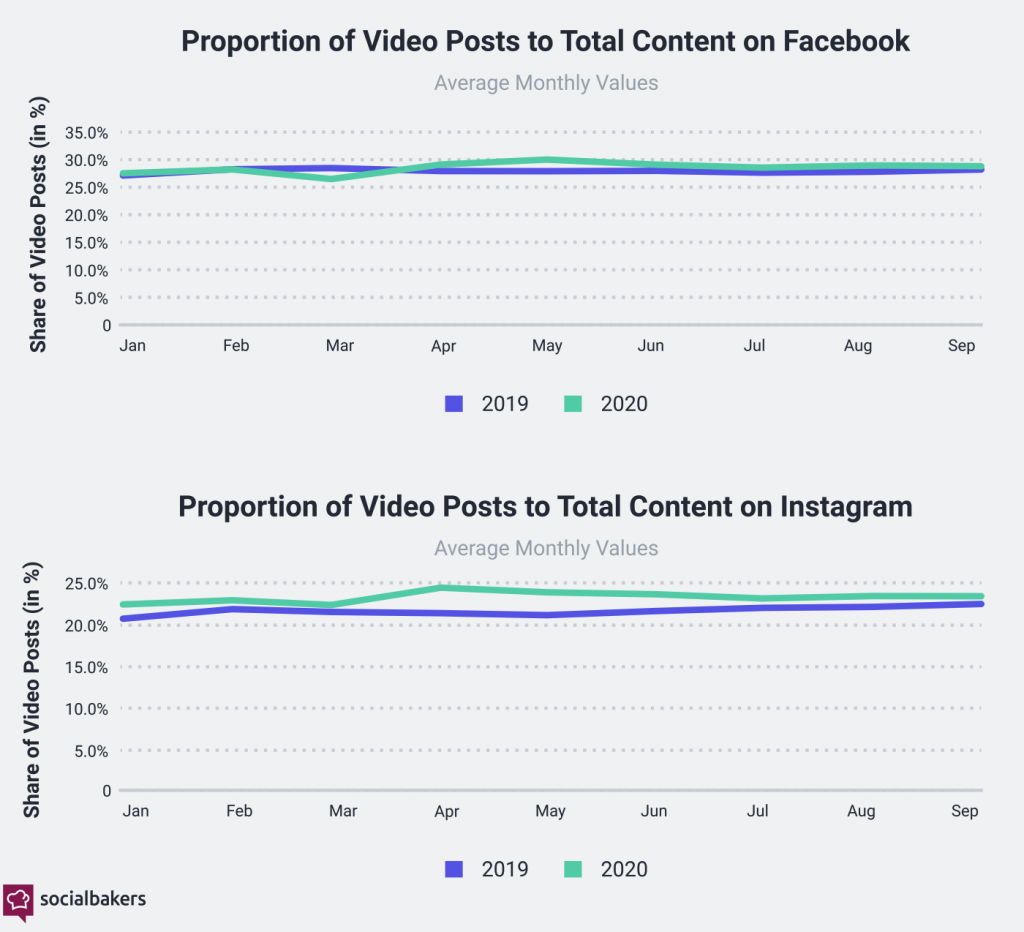
- According to Socialbakers data, long and very long videos on Facebook achieved the best overall performance and the greatest reach in 2020.
- The reach was best for very long videos over 5 minutes, which achieved a reach 70.4% higher than the second-best video length (long).
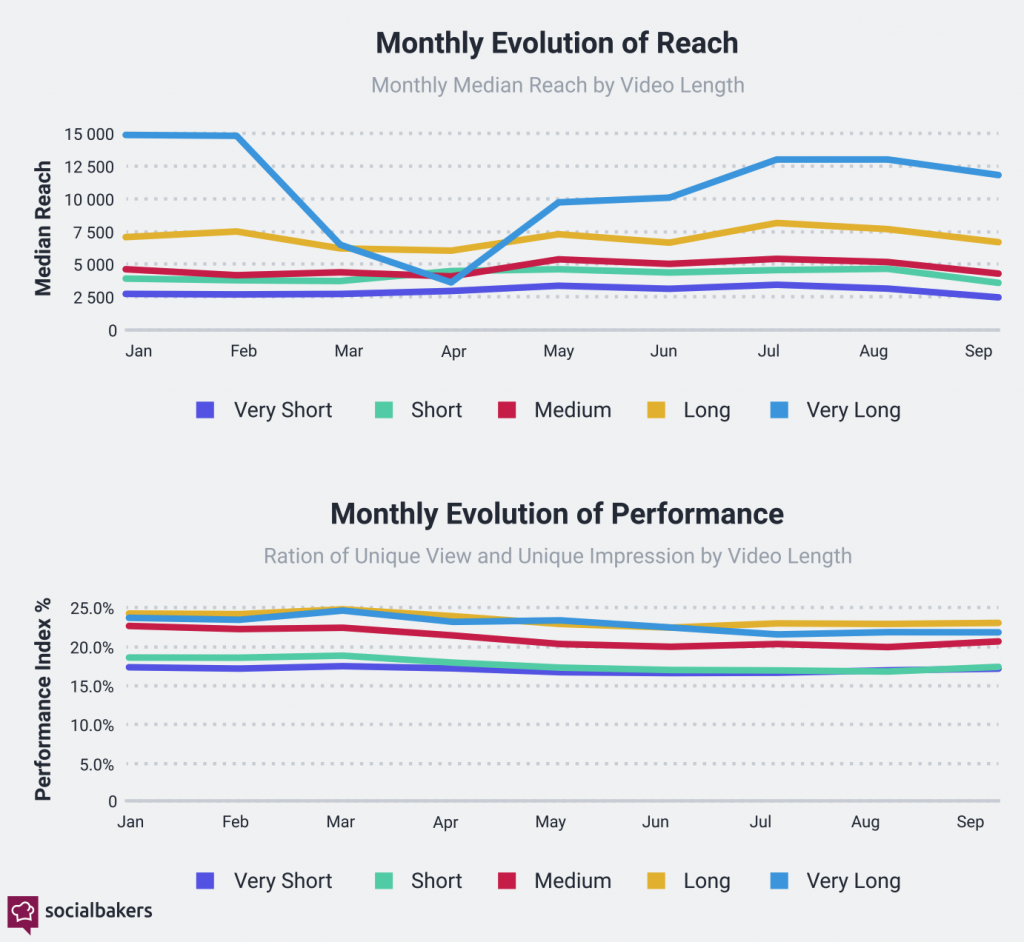
- Long and very long videos – practically anything longer than a minute – performed the best in both median reach and median interactions on Facebook.
- Looking at the last nine months, the median reach for very long videos (more than five minutes) was nearly 9,500, which was 35% more than long videos.

- Looking at year over year results for Q3, many industries saw drastic changes in their interactions on Facebook and Instagram.
- Some of the trends were exactly as most would expect, with Daily News (up 103.3% on Instagram and up 57.8% on Facebook) and NGOs (up 112.9% on Facebook and 31.2% on Instagram) seeing big increases as people turned to those industries amidst the pandemic and elections.
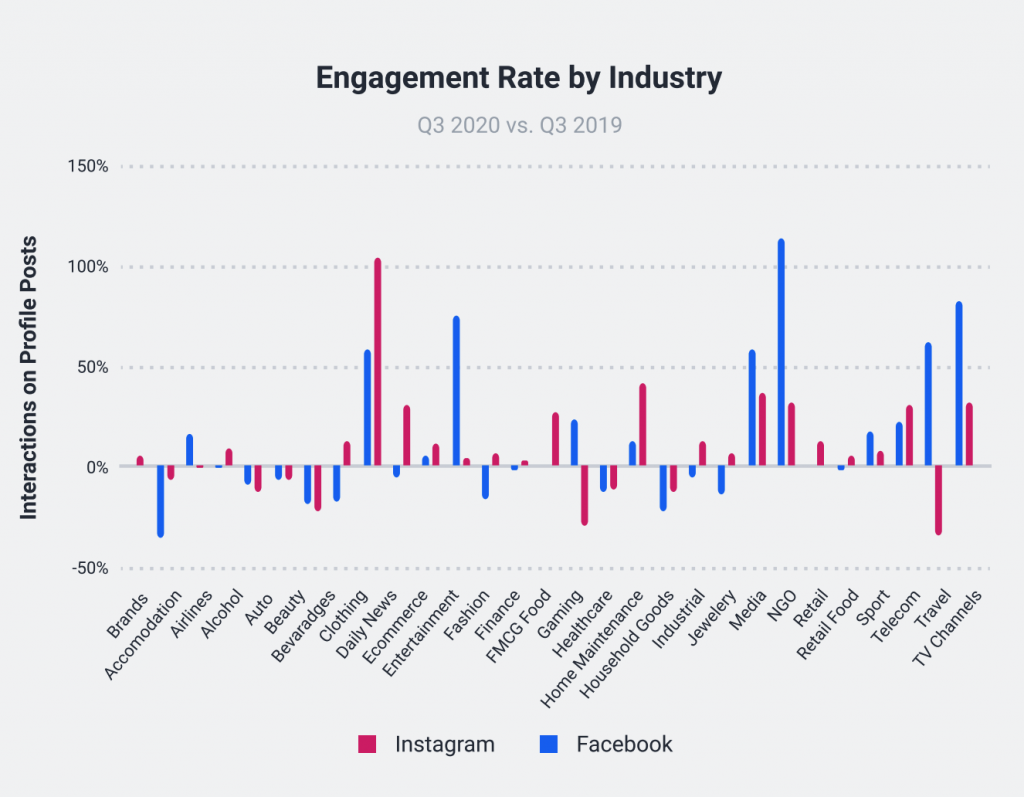
It’s crucial for marketers to do audience research to see how their particular audience’s habits have changed this year. The data in the report shows that while time spent online has returned to pre-pandemic levels, the time many people are online has changed.
INFLUENCER MARKETING
- In Q3 2020, the number of influencers who used #ad in their posts increased by 10.6% compared to Q3 2019.
- However, this year’s increase doesn’t compare to September 2019, when there was a 70% jump that led into a strong holiday season.
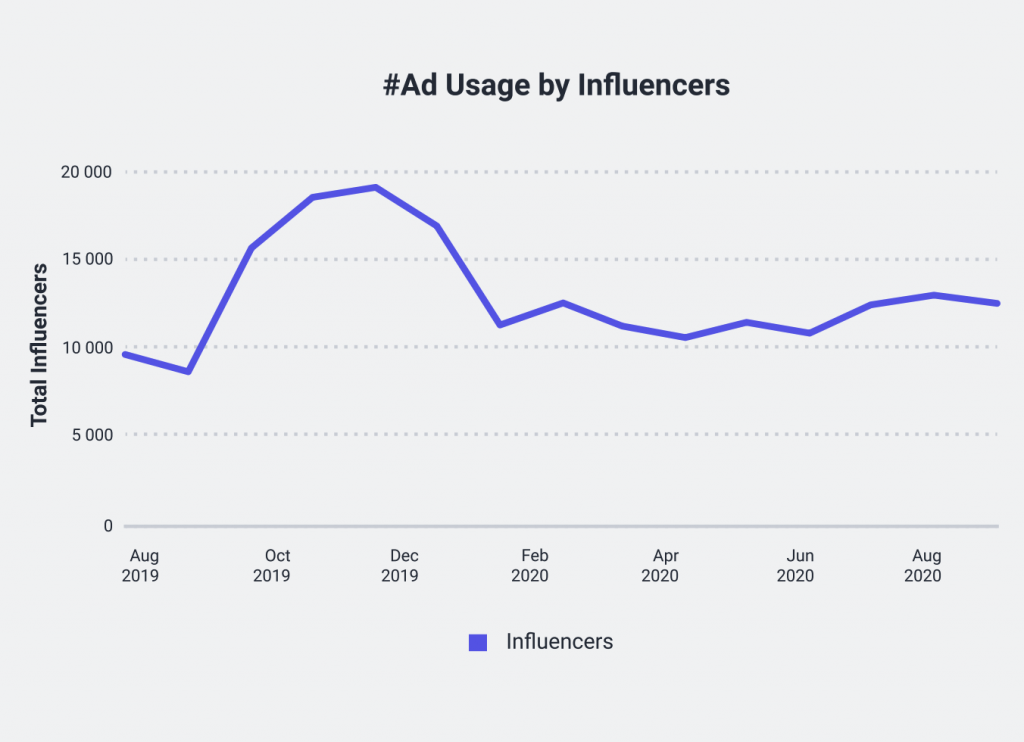
The upcoming quarter is a crucial time for the near future of influencer marketing. Socialbakers data shows that the biggest spike in #ad usage was, predictably, during the holiday season of Q4 2019, but the increase really started in Q3. This year, there wasn’t nearly the same kind of jump, and whether that’s strictly because of the coronavirus pandemic or if it’s a sign of some other marketing strategy change remains to be seen. But we’ll certainly have a clearer picture of where influencer marketing fits into current plans in early 2021.

